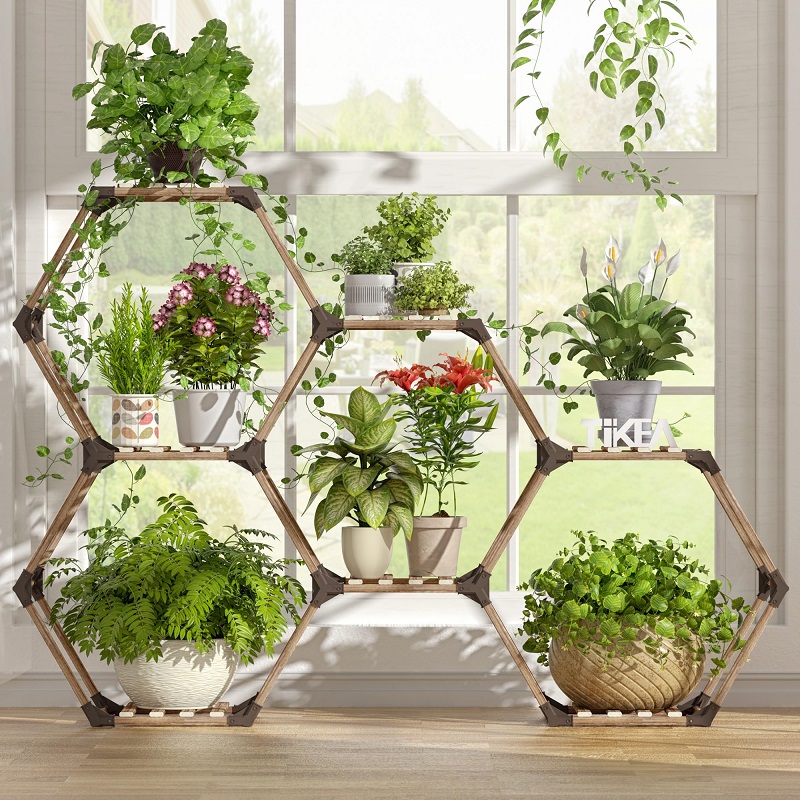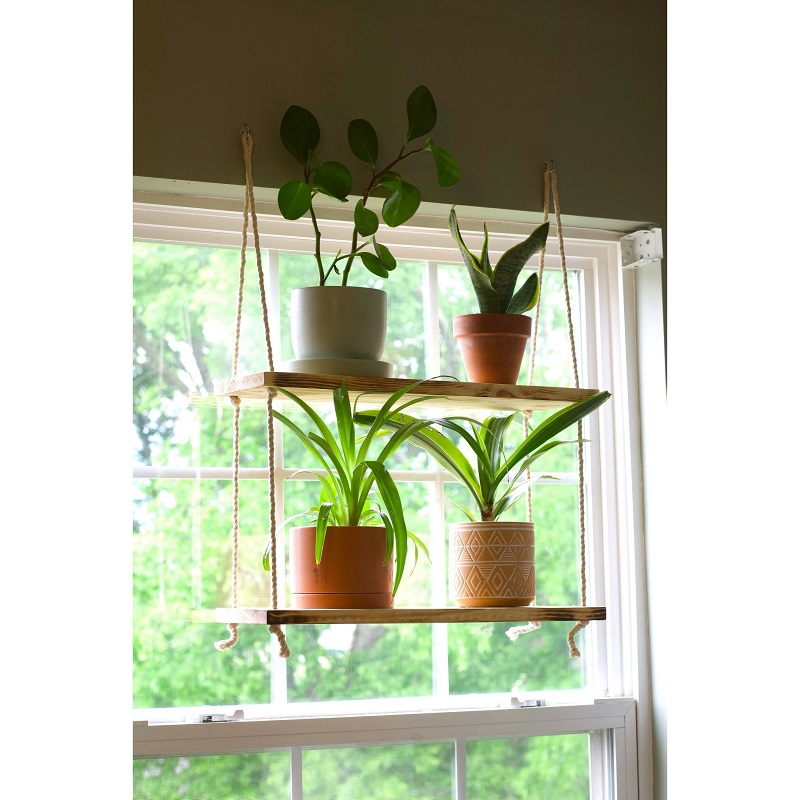Introduction to Window Plant Shelves
Creating a window plant shelf can be a transformative way to enhance your living space. It not only introduces a breath of fresh air but also adds a splash of color and life to your home. Plants can improve air quality, reduce stress, and boost overall well-being. In this guide, we will delve into the essentials of building your own DIY window plant shelf, exploring materials, design options, and the benefits of incorporating greenery into your environment.
Benefits of Adding Plants to Your Home
Improving Air Quality
One of the ultimate benefits of adding plants to your home is their ability to improve air quality. Indoor plants can filter toxins, produce oxygen, and create a healthier living environment. Studies have shown that certain species, such as spider plants and peace lilies, are particularly effective at removing pollutants from the air. By setting up a window plant shelf, you can harness these benefits while also enjoying the aesthetic appeal of lush greenery.
Enhancing Mental Well-being
Incorporating plants into your home can significantly enhance your mental well-being. Numerous studies have indicated that being around nature reduces stress levels and promotes relaxation. The act of caring for plants can also provide a sense of purpose and accomplishment. By creating a dedicated space for your plants, you not only beautify your home but also cultivate a sanctuary that nurtures your mental health.

Choosing the Right Location for Your Shelf
Evaluating Natural Light
When selecting a location for your window plant shelf, it’s crucial to evaluate the amount of natural light the area receives. Most houseplants thrive in bright, indirect sunlight, so placing your shelf near a window with ample light is ideal. Consider the direction your window faces; south-facing windows typically receive the most sunlight throughout the day, making them perfect for sun-loving plants.
Considering Room Temperature
Another important factor to consider is the room temperature. Plants can be sensitive to extreme temperatures, so choose a location that maintains a consistent climate. Avoid placing your shelf near heating vents or air conditioning units, as these can create drafts or fluctuations in temperature that may stress your plants. A stable environment will help ensure your greenery thrives.
Selecting Materials for Your Shelf
Wooden Shelves for a Rustic Look
Wooden shelves are a popular choice for DIY projects, as they offer a rustic and natural look. You can choose from various types of wood, such as pine, oak, or cedar, depending on your aesthetic preference and budget. Using reclaimed wood can also add a unique charm to your shelf while being environmentally friendly. Ensure that the wood is treated to withstand humidity, particularly if it’s near a window.
Floating Shelves for a Modern Touch
If you prefer a more modern aesthetic, consider installing floating shelves. These shelves create a sleek and minimalist look, allowing your plants to take center stage. Floating shelves can be made from various materials, including engineered wood or metal, and can be customized to fit any window size. They also save space and can be arranged in creative configurations for added visual interest.

Designing Your Window Plant Shelf
Layering for Visual Appeal
To create a visually appealing display, consider layering your plants at different heights. Use plant stands, books, or small pedestals to elevate some of your pots, creating depth and dimension. This not only showcases your plants beautifully but also ensures that each plant receives adequate light. A well-arranged shelf can become a stunning focal point in your room.
Mixing Plant Varieties
Mixing different plant varieties adds diversity and texture to your window shelf. Consider combining trailing plants like pothos or string of hearts with upright plants like snake plants or fiddle leaf figs. This variety not only enhances the visual appeal but also allows you to experiment with different shapes, colors, and sizes. Make sure to choose plants with similar light and water requirements for ease of care.
Plant Care Essentials
Watering and Maintenance
Caring for your window shelf plants involves understanding their specific watering needs. Overwatering is a common mistake, so be sure to check the soil moisture before watering. Most houseplants prefer to dry out slightly between waterings. Additionally, regular dusting of leaves helps the plants absorb light more efficiently. Don’t forget to fertilize during the growing season to provide essential nutrients for your plants.
Pest Control Strategies
Pests can be a challenge for indoor plants, but regular inspection can help you catch issues early. Look for signs of pests, such as webbing or discolored leaves, and treat infestations promptly with organic solutions like neem oil. Maintaining good air circulation and ensuring plants are not overcrowded can also reduce the risk of pest problems.
Personalizing Your Plant Shelf
Adding Decorative Elements
Personalizing your plant shelf can make it feel truly unique. Consider incorporating decorative elements like colorful pots, fairy lights, or small sculptures to enhance the overall aesthetic. Using pots in varying textures and colors can also add interest to the display. Remember to keep the focus on the plants while adding these decorative touches to avoid clutter.
Seasonal Decor Ideas
You can change the decor of your plant shelf seasonally to keep it fresh and engaging. In spring, consider using pastel pots or floral-themed decorations. In fall, introduce warm colors with pumpkins or autumn leaves. This not only keeps your space lively but also allows you to express your creativity throughout the year.
Choosing the Right Plants
Selecting the right plants for your window shelf is crucial for success. Consider your space’s lighting conditions and temperature when making your choices. Low-light plants like snake plants and pothos are great for dimmer areas, while succulents and cacti thrive in bright sunlight. Additionally, think about the growth habits of the plants; trailing varieties can create beautiful drapes, while upright plants can add height and structure to your display.

Arranging Your Plants
The arrangement of your plants can significantly impact both aesthetics and health. Start by placing taller plants at the back or center of the shelf and shorter ones in front. This creates depth and ensures that all plants receive adequate light. Experiment with different arrangements to find what looks best, and don’t hesitate to rotate your plants regularly to promote even growth and prevent them from leaning towards the light.
Incorporating Plant Care Tools
Having the right tools on hand can simplify plant care and enhance your enjoyment of your indoor garden. Invest in a moisture meter to help determine when to water, and consider using a spray bottle for misting plants that prefer higher humidity. Pruning shears can also be useful for trimming dead leaves and encouraging healthy growth. Organizing these tools neatly on your shelf can create a functional and visually appealing setup.
Conclusion: Embracing Greenery in Your Home
A Lasting Impact
Building a DIY window plant shelf is a rewarding project that allows you to embrace greenery in your home. The benefits of plants extend beyond aesthetics, positively influencing your health and well-being. By following the steps outlined in this guide, you can create a personalized plant shelf that reflects your style and enhances your living space.
Getting Started
Now that you have a comprehensive understanding of how to create your own window plant shelf, it’s time to get started! Gather your materials, choose your plants, and let your creativity flow. Transform your space with greenery, and enjoy the beauty and benefits that come with a thriving indoor garden. Happy planting!
